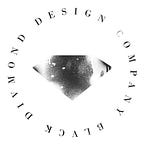7 Myths About Blockchain Debunked for You
Blockchain is a powerful technology — let’s keep it away from common misconceptions. Read this blog and learn the truth about some common Blockchain myths.
The game-changing Blockchain technology introduced a decade ago by Satoshi Nakamoto still manages to spike interest in most of us.
Since 2008, this technology has grown into a massive disruption that is impacting almost every other business and industry out there.
Many business giants, including IBM, Microsoft, Walmart, and Bank of America, have embraced Blockchain, and many more are expected to follow suit to leverage the power of Distributed Ledger Technology (DLT).
However, despite being a popular and groundbreaking technology, Blockchain is shrouded in misconceptions and myths. From being touted as a magic bullet to being of no use at all, people have all types of things to say about Blockchain. But the good part is, you need not believe everything they claim to be true.
Today, we have enlisted some common myths about Blockchain, which are nowhere close to the truth. Have a read and educate yourself about this disruptive new-age technology -
Myth #1: Blockchain = Bitcoin
Let’s admit it, at one point in time we all have used Blockchain and Bitcoin interchangeably.
Given Bitcoin is more popular than Blockchain, people tend to think that Blockchain is all about Bitcoin. However, both are distinct from one another on many levels.
While Blockchain is a technology to record transactions on a distributed ledger, Bitcoin is a type of cryptocurrency that enables electronic payment between two parties. Bitcoin is just one of the uber-famous applications of Blockchain.
Myth #2: Blockchain Can be Endlessly Scaled
Many, if not most, businesses believe that Blockchain can be scaled to an infinite extent.
However, scalability in Blockchain is still a far-fetched thought for now.
No doubt, Blockchain technology holds immense potential to disrupt and improve a business’s centralized process. But before you consider it as a viable alternative, it must be scaled. Although with the current transaction processing speed, it is hard to increase the limit of the transactions.
Another limitation attached to scalability is inter-node latency.
Since each block in the chain contains an imprint of the entire transaction, adding another transaction means making the nodes heavy, which eventually weakens the Blockchain.
Myth #3: Blockchain Can Be Used To Store Huge-Size Data
Given Blockchain is a distributed database on the internet, people think that it can be used to store all types of files and data. However, it isn’t the best use case for storing large-size files.
The data in Blockchain is stored in blocks, and each block is interlinked to one another. Every node you add will have a complete copy of the data.
Now imagine you use Blockchain to store files like videos or large-size images. The blocks will have to replicate the data, eventually increasing its size and reducing efficiency. Hence it’s unwise to say and believe that Blockchain is the best storing mechanism out there.
Myth #4: Blockchain is Meant for Banking Only
Most people associate Blockchain with Cryptocurrency. As a result, they think Blockchain is only for the banks and finance sector.
Although the first application of bitcoin took the finance sector by storm, there are various other industries where Blockchain is put to use. Logistics, pharmaceutical, healthcare, e-voting, insurance, and real estate are some of the areas Blockchain is bringing wave of changes.
Myth #5: Coins and Tokens are Same
We won’t judge you if you thought the same.
Blockchain offers both Tokens and Initial Coin Offerings (ICO), and they are not at all similar.
Here is how -
Coins are like digital money that has a single utility as a medium of exchange. But other than that, it can’t be used for anything else.
On the contrary, tokens are digital assets that can be utilized in various forms. They can store complex level of values like real estate properties or utility.
Myth #6: There Is Only One Blockchain
Well, that’s not true. At all.
Public & private, open & closed, and standardized & customized are common types of Blockchain technologies that are chosen by companies as per their business requirements. Do note that they all are cryptographically secure, distributed over the network, and based on a consensus mechanism.
Ethereum, Corda, and Hyperledger are some popular DLTs used today.
Myth #7: Blockchain is Only for Businesses
No — Blockchain is not only for big corporations and enterprises. Blockchain is for all those who have access to the internet connection and knowledge about this new-gen tech.
In fact, many experts and thought leaders believe that Blockchain is going to bring revolutionary reforms in the global economy. You can think of it as the World Wide Web that changed the face of the information system.
We hope this article helped in clearing some of the misconceptions associated with Blockchain. We are confident that the information will help you understand this complex technology better and make informed choices.
